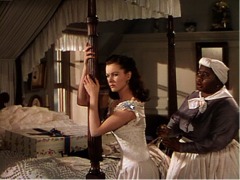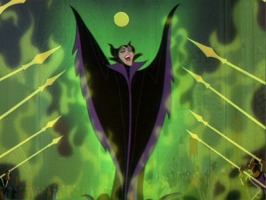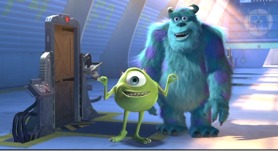Aspect Ratio Problems
Ever wonder what were all those 2.35:1, 1.33:1, 16:9 or 4:3 ratios printed on the back of DVD cases? Well, you'll have them fully answered here. Now, let's explore the evolution of aspect ratios from the past to present...
Part I: The History of Aspect Ratios
1.33:1
When motion picture history first started in the 1890s, filmmakers created their films in the 1.33:1 aspect ratio (Academy Standard), meaning that the width of the picture was 1.33 times wider than its height. Here are some examples of classic films created in this aspect ratio, captured directly from its DVD:
 |
 |
Left to right: MGM's Gone with the Wind (1939); Disney's Snow White and the Seven Dwarfs (1937) |
|
2.35:1
The 1.33:1 ratio for filmmaking continued, until 1953. That year, Twentieth Century Fox released The Robe, which was shot in a new "CinemaScope" method, which made the movie frame's width wider than the height by 2.35 times (2.35:1). This ratio was later called Panavision. Here are some examples:
 |
Above: New Line's The Lord of the Rings: The Return of the King (2003) |
Below: Fox's Star Wars: Episode II - Attack of the Clones (2002) |
 |
From then on, almost every filmmaker started to film their movies in this so-called "widescreen" format. Besides 2.35:1, they also used another range of aspect ratios which are also called "widescreen", which we will discuss further on...
1.66:1
1.66:1 is the aspect ratio usually used for animated films since the 1980s. It is the full animation frame of the movie which was drawn by the artists. Here are some examples:
 |
Above: Disney's The Lion King (1994) |
Below: Disney's The Little Mermaid (1989) |
 |
1.85:1
The most commonly used aspect ratio besides 2.35:1, usually used for dramas and comedies. Examples are:
 |
Above: MGM's The Silence of the Lambs (1991) |
Below: Universal's The Grinch (2000) |
 |
Other Aspect Ratios
Part II: Reformatted Aspect Ratios
When VHS tape was introduced in the 1980s, there was a problem. Everyone's television sets were standard 4:3 screens, ala an aspect ratio of 1.37:1, due to the fact that movies were made in a more or less the same 1.33:1 aspect ratio when TVs were invented. So how could movies created in widescreen show in these TV sets?
There are two ways. One, adding black bars on the top and bottom of the movie frame, therefore fullfilling its original theatrical aspect ratio, ala "letterboxed" format. Two, cropping the movie until it reaches a 1.37:1 aspect ratio, and moving the screen back and forth when there are important actions happening at the other side of the screen, ala "pan-and-scan" format.
Pan-and-scan has been loathed by movie fans since its introduction, because it destroys the director's original vision for the film just for the sake of filling up a TV set. It causes you to lose up to over 50% of the original film frame. Here are some examples for this horrible method of "reformatting films":
2.35:1 picture
 |
 |
"Pan-and-scan" example from Disney's Sleeping Beauty (1959) |
|
As you can see from above, although you can see more detail of the picture, the two sides are cropped, losing about 50% of the original frame. As for lower ratios such as 1.85:1, picture loss is not as critical as in here, but is still not desirable.
1.85:1 picture
 |
 |
"Pan-and-scan" example from Pixar's Monsters, Inc. (2001) |
|
Unfortunately, very little VHS tapes were released in widescreen since its introduction, but thanks to the birth of DVD, we finally have a wealth of films released in widescreen for buying. And things get better with 16x9 widescreen television sets and anamorphic widescreen, a technology that fits a widescreen movie into a widescreen TV.
To conclude everything, widescreen is the definitive choice when you buy movies, unless its original aspect ratio was already a 1.33:1 aspect ratio. Make sure you read the packaging of the DVD or VHS for confirmation of widescreen before you purchase it.
Hot Upcoming DVDs: The Star Wars Trilogy | Aladdin: Platinum Edition | The Ultimate Matrix Collection | The Return of the King SE |